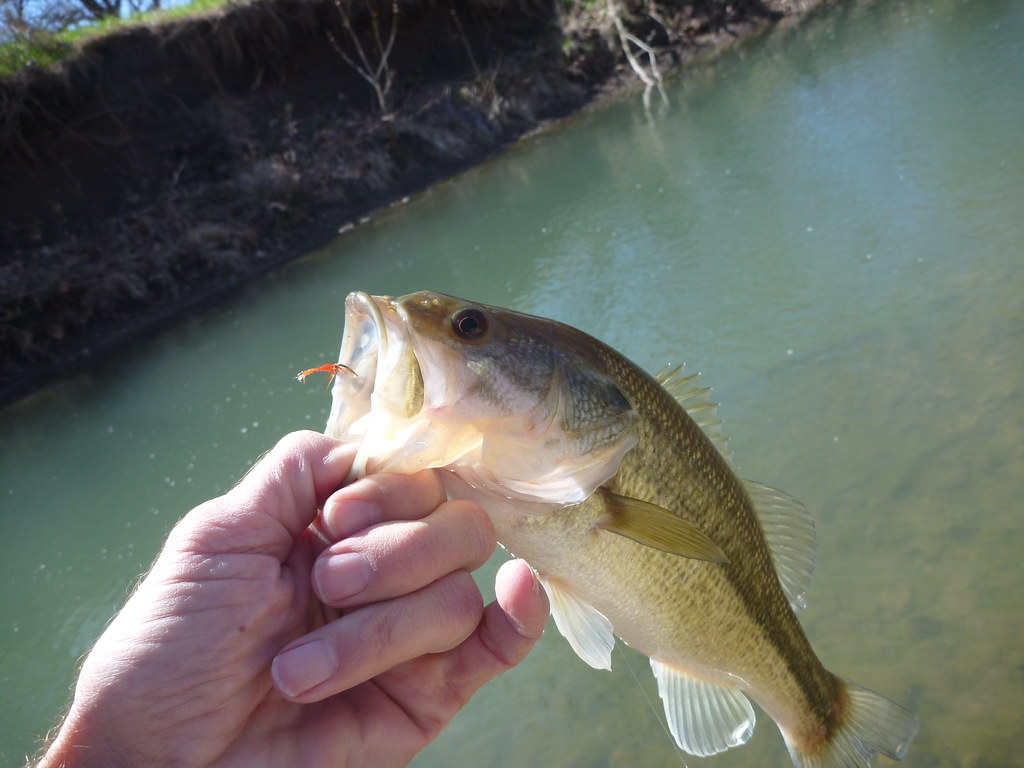More than forty years ago, under the species account for spotted bass, I came across the following:
…..But, some of my own most satisfying hours of fishing have been spent in catching spotted bass and little long-eared sunfish from pools along the brooks that drain the open, untilled prairies of Chase County. Frank B. Cross, Handbook of Fishes of Kansas, 1967. p. 252.
Here was the expert on all things fish in Kansas describing the kind of fishing that he valued most. What was missing here, was that Dr. Cross preferred to pursue these little bass and sunfish with a fly rod. Dr. Cross was one of my mentors and I was fortunate to go on a number of field trips with him to the Flint Hills but never to actually fish. Still, we talked a great deal about fly fishing these streams and fishing Flint Hill streams became a passion for me as well. Of course the difficulty is that vast majority of these streams are private which makes any access very precious. When I lived in the Flint Hills I was able to access several streams but that access went away when I was no longer “local”.
I’ve since dedicated most of my fishing time to out of state trout streams but every once in a while I get an urge to reacquaint myself with Kansas small stream fishing. Just such an urge hit really hard after watching Garold Sneegas’ beautiful presentation underwater photos of fish at the club meeting a couple of weeks ago. Many of Garold’s images were taken in the kind of Flint Hill stream that I have grown to love. Originally, GMAC and I planned to go down right after the club meeting but the weather and a door hanging didn’t cooperate. This past Saturday, I had planned to head down to Missouri and fish one of the Blue Ribbon trout streams but again I wasn’t sold on the weather. While eating breakfast at Wheatfields I happened to look at the weather for the the central part of the state and saw that it was forecast for 70 degrees and only moderate winds. I made a quick executive decision and took off for the hills to scout a potential fishing stream. An hour and a half later I was in the heart of the Hills. Bright sun, 60 degrees, red buds were blooming and since the wind was down the ranchers were burning pastures. Spring in the Flint Hills.
I like to focus on the upper parts of the streams where there are deep pools separated by riffles that make it easy to move from side to side. This stream was a classic Flint Hill stream with high bank on one side and gravel bars on the other in the upper part of the drainage. The water is clear with visibility down about 2-3 feet much like an Ozark stream.

The fishing was typical of what I’ve found in the past on similar streams this early in the season–spotty. I managed to catch four bass and a bluegill in a couple of hours of fishing and exploring. All the bass came in runs/pools like narrow pool at the base of this bank.

They aren’t very big but they are fun.



And like I have found many times in the past, pools that I think should guaranteed to hold fish apparently hold the fish too well. I didn’t catch anything here up against those rocks despite the great structure.

And only the bluegill here.

This is typical fishing these streams in April–at least in my experience. They tend to do better latter in May and June if they don’t get blown out with too much rain. Evening fishing once the bass are looking up and poppers are working can create the kind of experience that Dr. Cross described more than 40 years ago.
I only explored about 3/4 mile of stream. I had to head back home to get to my niece’s fortieth birthday celebration. Still, There is much more to this stream. Downstream the pools are longer, deeper and the riffles are fewer. For me it is important to explore a stream like this just a little bit at a time–to savor it. There is much to learn, absorb and appreciate. I’ll be back soon–even if it cuts into my trout time.
BW
